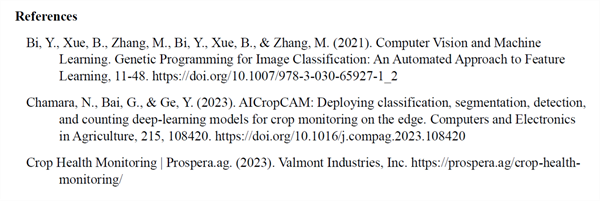Organic farming faces two major challenges: weeds, which remain the number one concern, and insect pressures that can severely affect crop quality and yields. Effective strategies for managing weeds and insects are critical, especially as organic production expands. Traditionally, these tasks have been labor-intensive and time-consuming, creating a strong need for innovative solutions that can improve efficiency while maintaining crop standards. With the current momentum for increased AI integration into agriculture supported by both industry and Washington D.C., novel technologies AICropCAM present exciting opportunities for leafy green growers. These high-tech platforms could offer early-stage detection of weeds and insects, helping growers respond more quickly and precisely. Such innovations have the potential to save significant time and labor, particularly across large acreages, while improving overall crop management decisions.
What is AICropCAM, and How Does it Work?
AICropCAM (Figs. 1, 2, & 3) is an advanced edge image processing platform designed to extract plant and canopy features directly from field crops. Its structure includes three key layers:
- A small camera is installed in the field between healthy plants.
- It takes regular pictures and uses smart computer programs (AI) to check for anything unusual, like new weeds or early signs of insects.
- Instead of sending all the big image files, it sends only the important results through a wireless network to a central computer or to your phone or tablet.
- You can then view the results easily, saving you time and helping you make faster decisions.
One of AICropCAM’s biggest advantages is its ability to perform deep learning-based image processing directly in the field. This means it can detect subtle signs of weed emergence or insect damage in real-time, capturing critical information that traditional imaging or simple sensors often miss. Edge computing also significantly reduces the need for high-bandwidth data transmission, a major limitation in rural agricultural areas.
Looking Ahead
Incorporating AICropCAM into leafy green production systems could help growers proactively manage weeds and insect pressures, optimize resource use, reduce chemical interventions (especially important in organic systems), and save time and labor. These technologies offer a glimpse into the future of precision agriculture, where early detection and informed decision-making can significantly boost sustainability and profitability.

Figure 1 (left): AICropCAM-insect detection, Figure 2 (middle): AICropCAM-weed
detection, Figure 3 (right): AICropCAM-installed in the field.








